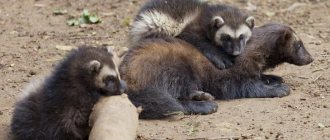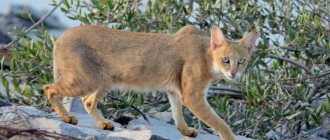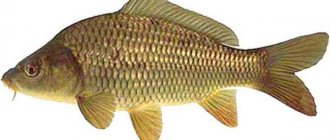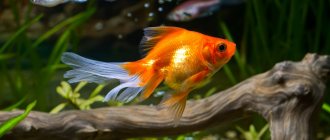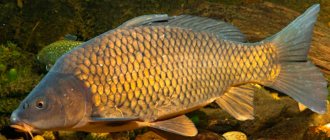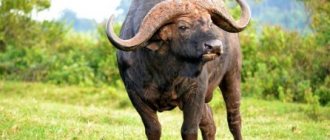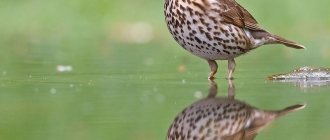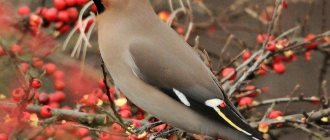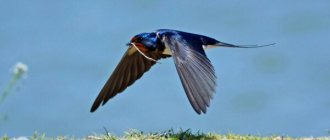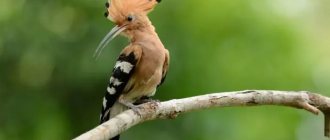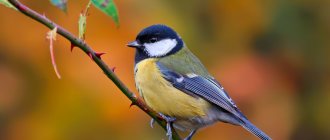Description and features
In total, the genus Aratinga has 24 subspecies, the representatives of which differ in size and color. Sunny Aratings with bright plumage, funny habits and remarkable mental abilities are deservedly popular among bird owners and lovers.
Appearance and dimensions
Sunaringas are relatively small in size, their body length varies from 16 to 35 centimeters, and they weigh about 120 grams. The birds have a fairly powerful thick beak and a stepped wedge-shaped tail. Aratingas, as representatives of their genus, have white circles around the eyes.
Did you know? Parrots name their chicks just like people do. True, the human ear is not able to distinguish these sounds, but with a careful approach, you can catch a change in intonation. The chicks themselves know their names very well and respond when their parents call them.
These bright and colorful birds, nicknamed “little rainbows” because of their colors, have feathers of red, green, blue, yellow and their shades. The color intensity of a bird is an individual matter and, moreover, changeable. Chicks from the same parents can look completely different.
Young birds most often have green and its shades as the predominant color, but by the age of two, the young bird acquires more yellow and orange in its already constant color.
It is very difficult and even impossible to distinguish a male solar aringa from a female. It is true that some breeders have developed their own criteria based on head size and shape, but these findings certainly cannot be relied upon.
Intelligence, character and life expectancy
The intellectual abilities of the solar aratinga are quite high. This is a sociable bird that does not have a tendency to conflict; it has an excellent memory, thanks to which it is easy to train: it learns a variety of tricks, as well as words and phrases.
We recommend that you read about how much popular parrots cost and where you can buy them.
Sunaringas are not the most vocal parrots, and some breeders have concluded that a particular individual has a “limit” on the number of words they can speak. This explains their ability to replace “old” words with new ones they like over time.
Having become attached to its owner, the aratinga becomes a wonderful companion for him, strives for constant displays of affection and tenderness, for spending time together, which borders on obsession.
Some of the personality traits of these parrots can be a problem for owners and family members. Firstly, aratingas are incredibly noisy, and express all their emotions with screams of a rather unpleasant timbre, although to communicate with each other they have a different voice sound: cooing and quite pleasant.
Did you know? A parrot can learn to reproduce not only the sounds of a voice, but also a doorbell, a drill, a food processor, a telephone, and so on. If you don’t want your pet to “prank” you by pretending, for example, that a mixer has suddenly turned on, keep it away from household appliances.
They scream for any reason or without it, but they become as loud as possible in the evening or early in the morning, so you should carefully weigh all the arguments before you choose a solar arathing as a pet.
Secondly, having a powerful beak, aratingas can become real destroyers. They test the strength of everything they come across and are capable of causing significant damage to property and endangering their lives, for example, in the case of electrical wires.
To avoid this phenomenon, give the bird every day new interesting branches from wood of approved species, with the help of which the parrot will satisfy its interest and instincts.
Important! Due to their remarkable colors, these birds are vulnerable to natural enemies, as they are very noticeable.
Solar aratings live quite a long time: 15–30 years with proper care and the right attitude. Their relatives living in the wild cannot boast of such a long life; natural factors may lie in wait for them there:
- element of nature;
- productivity;
- illness;
- predators.
Criterias of choice
It is better to purchase a feathered friend from a specialized breeder or nursery. This way you will avoid buying an old, wild, sick bird. When choosing a parrot, consider the following factors:
Age
All tail and tail feathers should already be in place. Do not believe it if an unfeathered individual is passed off as a chick. Perhaps she is sick or has lost her feathers from old age. It is better to purchase Aratinga for successful taming at the age of 3-6 months.
Signs of the disease
Examine the parrot. A healthy bird has a neat appearance. The feathers near the cloaca should be clean and the skin should not be inflamed. The pet's gaze is clear. All toes and claws are present on the feet and there are no spots or scales.
Sunny Aratinga - my impressions after a year of life.
Reaction to a person
The most sociable, affectionate pets are obtained from chicks that are hand-fed or periodically taken out of the nest to play with humans. When you approach, the bird should not rush around the cage, scream or show aggression. A tamed parrot will remain in place or move away slightly, remaining calm.
Habitat and lifestyle
Aratingas are native to Central and South American multi-story forests. During the day, they lead a hidden lifestyle, hiding from the heat and dangers in the treetops.
It will certainly be useful for you to get acquainted with the best breeds of parrots: Pied Rosella, Alexandrine, Fisher's lovebirds, Green-winged macaw, Goffin's cockatoo, Australian king and red-tailed gray.
Leading a gregarious lifestyle, these parrots thus ensure their survival and also maintain their numbers. Birds pair up only during the nesting period and while their offspring are hatching.
How to choose a chick
It is better to buy Aratinga from a breeder who has proven himself well. The cost of a parrot depends on the type of bird, color, age and other factors. Prices range from 20-60 thousand rubles.
When choosing a chick, you should pay attention to its appearance; it can say a lot about its well-being. A healthy parrot is active and noisy, it has clear eyes, beautiful, dense plumage, and a smooth beak.
The Aratinga parrot has won fans thanks to its beautiful appearance and friendly disposition. The bird will bring a lot of joy to those who are ready to pay attention to it, give it care and love.
What do they eat in the wild?
Their food in the wild is mainly plant food:
- fruit;
- cereals;
- herbaceous plants.
A common practice for them is mass raids on agricultural land in order to profit from grain.
This is a real problem for local farmers, as the feathered thieves cause significant economic damage to them. Did you know? It turns out that a parrot can be right-handed or left-handed. Observe which paw your pet grabs the offered treat.
Nutrition
In natural conditions, bright parrots feed on fresh leaves, greens and fruits. They do not disdain grain that has ripened in the farmers’ fields. In captivity, it is recommended to add nuts, egg mixture, white bread and mineral supplements to their regular food. This diet allows you to maintain the healthy appearance of the birds and the brightness of their color. Water is also extremely important for them.
The Aratinga parrot does not accept animal food, so you should not offer it such mixtures. If a curious bird wants to try food from the human table, it is better to stop such attempts. It is not advisable for these parrots to consume salt, chocolate, avocados, sugar, cold and hot foods.
Reproduction
At 3–4 years old, solar aratingas enter sexual maturity and are ready to reproduce.
When the time comes to reproduce, birds choose a mate for themselves, approaching this issue with all responsibility, because they spend many years together under favorable conditions. Nesting in these parrots occurs once a year, and often the first clutch is fruitless.
The couple finds or prepares with the help of powerful beaks a suitable hollow, in which the female lays several eggs over the course of 2–4 days: from 2 to 5 pieces.
She then incubates them for 24–28 days, while her husband provides her with food and protection.
We advise you to find out how many days parrots hatch eggs.
But the male may not be limited to only “male” duties; males also join the females and hatch offspring along with them. They do this when they themselves are satisfied and feed their spouse. They spend the night in the nest together, warming the clutch.
It takes about a month from laying to hatching of eggs. After the first baby appears, the mother can afford to leave the nest for a while. In general, both parents are equally caring and affectionate with their children.
After 7–8 weeks, the chicks are ready to leave the nest, fledged and able to fly.
Sunny Aratinga - a parrot with high intelligence
This species is considered the most popular among parrot breeders. It got its name because of its unusually juicy, rich yellow color. The head and most of the bird's body are decorated with sunny yellow feathers. The bird's eyes are outlined by a thin pale gray rim, around which two orange spots diverge. On the lower part of the wings, the sun aratinga parrot has many greenish feathers, and on the tail there are a few blue ones. The bird acquires permanent color only at the age of 2 years. In youth the plumage may be green. The length from the head to the tip of the bird's tail is 17 - 30 centimeters.
In addition to the fact that parrots of this species are incredibly cheerful and active, they are easy to train. The Sunny Aratinga can remember several phrases, dozens of words and tricks. They are easy to train and extremely interesting. Since this species does not belong to the “talking” parrots, you should not count on the bird’s large vocabulary. “Flying flowers” have a special love for entertainment. They can make either a person or another animal a playmate. Birds do not conflict, so they get along well with a wide variety of bird species.
Features of keeping in captivity
A decent-sized bird, the solar aratinga, kept in captivity, requires decent living conditions and care. Lovers appreciate them because Aratingas are smart, cheerful, funny, gentle and loving creatures. However, they are quite noisy and can be real destroyers, which, however, poultry farmers have come to terms with or have learned to cope with.
There are also parrots with a rather bad character; they, of course, require special attention and corrective measures.
Did you know? People and parrots have a lot in common. For example, many of their species like to drink. In nature, they eat fermented fruits and then enjoy alcoholic intoxication.
Singles or need a couple
In the wild, solar aratings, living in a flock, choose a mate for themselves for many years, and outside the nesting period, they distinguish their “other half” from other members of the flock, treating them with greater tenderness. In captivity, pairings can only form naturally if the birds have a choice. In the absence of one, the owner forms the pair.
Cell
The cage for these parrots requires a spacious one; its size should be sufficient so that the bird can at least fit in it with its wings spread to their full span. It is advisable that the rods be metal: wooden ones will meet a quick and sad fate; the pet will chew them off.
However, wooden perches must be present at all times so that the bird has the opportunity to satisfy its instincts.
Take a closer look at how to make large cages for parrots with your own hands.
A cage intended for one bird must have dimensions of at least 60x60x100 centimeters. For a couple, of course, you need a more spacious home, in which, among other things, you should place a house that will replace the hollow used by parrots during the nesting period.
Its dimensions: 30x30x60 centimeters, taphole length 8–9 centimeters. Wood dust covered with a 5–7 cm layer is used as bedding.
The cage needs regular cleaning, which includes cleaning and washing. Of course, the drinking bowl and feeder also need to be washed and cleaned regularly.
Aratingas are very active parrots; they need to be given the opportunity to get rid of excess energy, otherwise it will be directed in a destructive direction.
Important! The water bowl and feeder should be placed far away from each other, because these cute pets can throw food into the water, turning both into an unusable substance.
Watching your pet's habits, you will be amazed at his dexterity, mobility and agility. These birds are very fond of a variety of toys designed for physical and intellectual exercise:
- bells;
- rings;
- chains;
- stairs;
- climbing frames;
- puzzles;
- twigs;
- mineral stone.
Aratinga can engage with a puzzle toy for relatively long periods of time with amazing results.
Did you know? Unlike human binocular vision, parrots have monocular vision, that is, they see a different picture with each eye, distinguishing up to 150 images per second. A person can distinguish 16 images in a second.
Care and hygiene
To keep the parrot in good shape, it should be regularly given the opportunity to fly at least around the apartment, but it is better if it has the opportunity to visit a walking area for birds.
Aratingas are big fans of swimming, so the owner should also take care of water procedures. To do this, a special bath is installed in the cage, in which the water is changed daily. If there is no bath, the pet is sprayed with a spray bottle.
Parrots also require good lighting, absence of temperature changes and drafts. The humidity in the room where they are kept must be maintained at 60–70%, and the air temperature should be +22–25 °C.
Feed and water
Aratinga does not require specialized food; he is ready to be content with a grain mixture for parrots, and will also be happy to eat a lot of fresh vegetables, berries and fruits.
It is known that for parrots proper nutrition is the key to their health. Find out what parrots can and cannot eat.
The daily diet may contain supplements from:
- seeds;
- greenery;
- young shoots and flowers of fruit trees;
- walnuts, hazelnuts and peanuts;
- mash;
- dried fruit porridge;
- sprouted grain.
You can give white sunflower seeds as a treat while learning tricks, but not more than 5-6 pieces per day. You can also use pumpkin seeds, raisins, and pieces of dried fruit for these purposes.
It is forbidden to give these parrots salt and oil: they can cause digestive upset in birds.
A day, one aratinga eats 3-4 tablespoons of a grain mixture consisting of 14-17 components, in addition to plant foods.
It will probably be useful for you to read about how long a parrot can live without food and water.
In addition, it is necessary to regularly offer your pet mineral supplements:
- sepia;
- mineral stone;
- mineral mixture.
If you are ready and able to put up with the peculiarities of such pets as parrots, you need a lacquered, cheerful and energetic pet that will give you love and tenderness for a long time, then the sunny Aratinga will be an excellent choice.
Kinds
Gold
In the wild, it has become widespread in the northern and eastern regions of Brazil. Quite a large subspecies, reaching 38 cm in length. Most of the feather cover is golden yellow with dark green accents on the wings. The beak is light. The subspecies is now endangered and protected by law.
Golden aratinga
Redhead
This species lives in Ecuador and Peru. The body color is green with red areas. The crown, forehead, part of the wing and sides are scarlet. They lend themselves well to breeding in captivity.
cactus
This species is widespread in northeastern Brazil. In the wild, it inhabits arid steppes with cactus vegetation. The back of the bird is dark green. The forehead and crown are blue-gray, and the top of the chest and neck of the aratinga are gray-brown. The abdomen is made in yellow-orange tones. It is rare among hobbyists, but when kept in pairs it reproduces well.
Yellow-eared
They live in the subtropics of the Andes, from Colombia to Ecuador. One of the largest birds belonging to the Aratingas. The length of an adult is about 40-42 cm. The body is colored in different shades of green. Frenum, frontal part of the head, cheeks with a yellowish tint. The flight feathers have black tips, and the tail feathers on top have a pale red-brown tint.
Yellow-eared species of Aratinga parrot
Finsha
The bird is named after the German ornithologist who discovered this species. The feather cover is shiny, mostly green. There are scarlet spots on the head and forehead, and orange patches on the wings.
Orange-headed
Lives in coastal areas from Mexico to Costa Rica. The plumage is olive green, lighter on the belly. Periorbital rings in yellow-orange tones. The tail of the aratinga has a yellowish tint, dark on top. The variety is distinguished by its loudness, which makes them more suitable for aviary keeping than for living in an apartment.
Blue-fronted
The species includes about five variations inhabiting the fields and forests of Colombia, Argentina, Venezuela, Paraguay and Bolivia. The main color of the feather cover is green. Cheeks, frontal and parietal parts of the head, “glasses” are blue. The inside of the tail feathers is blood-red with a brownish tint, and the flight feathers have black tips. These parrots are often found among hobbyists and are relatively well trained to speak.
Read also
Blue-fronted Amazon
Blue-fronted Aratinga Parrot
Golden-capped
They inhabit the eastern part of Brazil. The main tone of the plumage is green. The forehead, back of the head and “glasses” around the eyes are red. The abdomen is burgundy in color, and the upper tail border is the same shade. There may be yellow spots on different parts of the body.
Brown-cheeked
In its natural environment, it inhabits the tropical forests of Brazil, Colombia, the Netherlands, Panama, Venezuela, Mexico and Puerto Rico. Like most arateas, most of their plumage is green. The head and breast are copper with a yellow-orange tint.
Golden-browed
Inhabitant of the Paraguayan forests and eastern lands of Bolivia. The main color of the plumage is green. The abdomen is lighter and has a yellowish tint. The bird's forehead is in red and orange tones, and the crown has a bluish tint. The golden-fronted aratinga's throat is brownish. When kept in pairs, they can produce offspring. More trainable in conversation than others.
Golden-fronted species of aratinga
Solar
Its habitat includes Venezuela, Guiana and the northern regions of Brazil. The subspecies is considered the most beautiful ornamental bird for home keeping. The color is very bright. Most of the body has a rich yellow cover. The wings are painted in dark blue tones with a greenish edging of some of the feathers. The tail of the aratinga is emerald in color, and its tip has a bluish tint. The beak and iris are brown.
The solar aratea is the most popular representative of the species among bird lovers. They are perfectly tamed and reproduce when kept in pairs.
Red-faced
It lives in Venezuela, Colombia and Peru. The bird is dark green. There is a scarlet “cap” on the head, and red spots in the area around the beak. This species makes affectionate, friendly pets. With regular practice, they are able to learn a few words.
Red-faced Aratinga
Yendaya
They inhabit the forests of Guiana and eastern Brazil. There are four varieties, which differ slightly in body color. The main color tone is golden yellow. The flight feathers are colored deep blue, and the bird's tail is green. The beak is beige with a pinkish tint.
A peculiarity of Aratinga Yandaya is considered to be the deep attachment of parrots of one pair to each other. They form alliances for life and never separate for almost a second. In captivity, pets successfully reproduce when kept in an enclosure.
White-eyed
The light periorbital ring in birds is well defined, which gave the birds their corresponding name. The main color of the parrot's body is bright green. There are scarlet inserts on the head, neck and shoulders. They are difficult and take a long time to tame, which is why they are not very popular among breeders. But they are considered the quietest among their brothers.
White-eyed Aratinga Parrot
Haitian
The name corresponds to the area of distribution. The plumage is grassy green. The species is on the verge of extinction and is protected by law.
Nicaraguan
Since 2013, the species has been excluded from the genus Aratinga and classified as necklace parrots based on DNA analysis. Currently, these green birds are in danger of extinction.
Colombian
There are four subspecies of these birds. In the wild, they live in Colombia, Peru, Venezuela and Ecuador. Parrots are painted green, the belly is lighter in tone. The flight feathers and tail of the aratinga are olive-colored, and the craw and throat of the bright creatures have transverse red stripes. Birds can be trained to talk, are unpretentious and well trained.
Guatemalan
In the wild there are four subspecies. The birds inhabit the territory from Mexico to Nicaragua. The body plumage is shiny, green, lighter on the belly. The edges of the tail are gray. The beak is dark pink.
Guatemalan species of aratinga parrot
Nandaya
Because of its coal cap, it is also called the black-headed aratinga. Birds inhabit the south of America, Paraguay, the southeastern regions of Bolivia, the north of Argentina and the lands of Brazil. The main color of the plumage is green. The cheeks, frontal and parietal parts of the head, as well as the throat are black. The chest has a blue tint. The wing is painted in black and blue tones, with beautiful flight feathers of a heavenly color. The tail is light, with an olive tint and a grayish undertail. The bird's legs are green and red. These parrots are easy to care for and lend themselves well to breeding in captivity.
Brownhead
They live in tropical forests near the Amazon River. One of the smallest representatives of the species, no different in size from budgerigars. The color of the plumage is green, the head of the parrots is gray-brown.
Jamaican
Small birds of bright green color. The tips of the wings are turquoise-blue. They inhabit the forests of Jamaica, Mexico, Panama, the Dominican Republic, Guatemala, Honduras and Costa Rica.
Cuban
Received the name for the corresponding habitat area. Small green birds. There are blotches of red on the neck, head and upper legs. Flight feathers with blackish tips.
Cuban aratinga parrot
Read also
Cuban white-headed Amazon parrot - care and maintenance
Exercises
Like all birds, the Aratinga requires proper exercise for good health. Sunarings are very active by nature and need plenty of space to fly, explore and play.
Your Sunaringa should be left out of her cage for at least 3 hours every day. Foraging and other exercise are vital for these intelligent birds.
Be sure to provide your bird with plenty of interesting toys and change them regularly to prevent your pet from becoming bored.
pros
- Sociable, affectionate and pleasant
- Smart, can teach tricks
- One of the brightest birds
Minuses
- Noisy, not suitable for apartments or immediate neighbors
- Can't speak
- May become irritated with children if provoked.
Conditions
Poultry are terribly clean, the cage in which they live, as well as all surfaces accessible to them, must be wiped with damp cloths daily. Food is removed from the feeder immediately after saturation, the water is changed several times a day. We'll have to arrange a place for swimming. If the room temperature is above +23 degrees Celsius, you can spray the bird with warm water from a spray bottle.
Air humidity should not be less than 60-70%. The nails of poultry are regularly cut.
You can expect unexpected surprises from pet Yandaya parrots. For example, many people throw food into water before eating. To avoid food souring and wasting it, food bowls are placed as far as possible from the water bowl.
Some owners don't like the loud voice of their new pet. This is something to consider when purchasing domesticated Aratinga Yandaya.
Spreading
The homeland of Arating parrots is America. They can be found in the deciduous forests of Brazil (aratinga yandaya and golden), mainly in highlands, on the edges of damp forests, in parks and savannas of Peru, Bolivia and Argentina (golden-fronted).
In the past, they were found everywhere throughout the entire territory of these countries, but the spread of predators, the transfer of their habitat from familiar lands to unfamiliar places, which occurred under human influence, had a significant negative impact on the number.
Farmers who grow vegetables and fruits near the area favored by the Yandaya aratinga parrots destroy them by the dozens, quite reasonably fearing for their harvest.
Golden Aratinga - large two-color beauty
The lemon-yellow color allowed this bird to get its name by analogy with the most beautiful and popular precious metal. The plumage can be diluted with light or emerald green feathers. As a rule, these contrasting “inserts” are located on the wings. The bird's beak has a steel-silver tint, and the eyeliner that outlines the eyes is snow-white. Often, several small greenish spots stand out on the lemon-yellow head feathers.
The golden aratea is larger than its fellows. The total body length is 35-38 centimeters, and the tail length is about 16 centimeters. The color is more sparse. The plumage of other parrots can include up to 5 colors, while the feathers of these large individuals have only 2.
General health problems
Like other parrots, aratingas are prone to feather plucking. While this can be caused by medical reasons, it is most often a sign that the bird is bored or not getting enough attention.
Aratingas are also susceptible to avian viral diseases such as ventricular dilatation disease and psittacine beak and feather disease.
They can also be affected by the bacterial infection psittacosis, beak malocclusion (overbite of the beak), and the fungal infection caused by aspergillosis.
If you suspect your bird is sick, you will need an avian veterinarian to examine your bird. You should schedule annual checkups with this specialty veterinarian.
